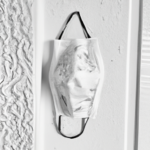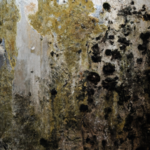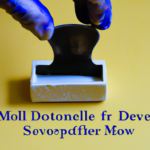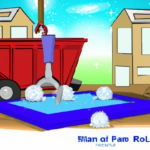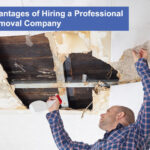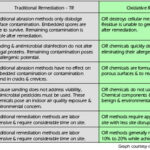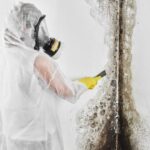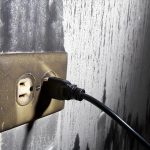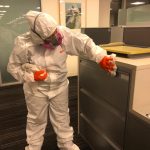In this article, you will discover effective strategies for removing mold from your home. Mold growth can be a common problem in many households, causing health issues and damage to your property. However, with the right techniques and precautions, you can tackle this issue head-on and ensure a mold-free living environment. From identifying the source of the mold to implementing proper cleaning methods, you will learn practical steps to eliminate and prevent mold growth in your home. Say goodbye to mold and hello to a healthier living space with these effective mold removal strategies.
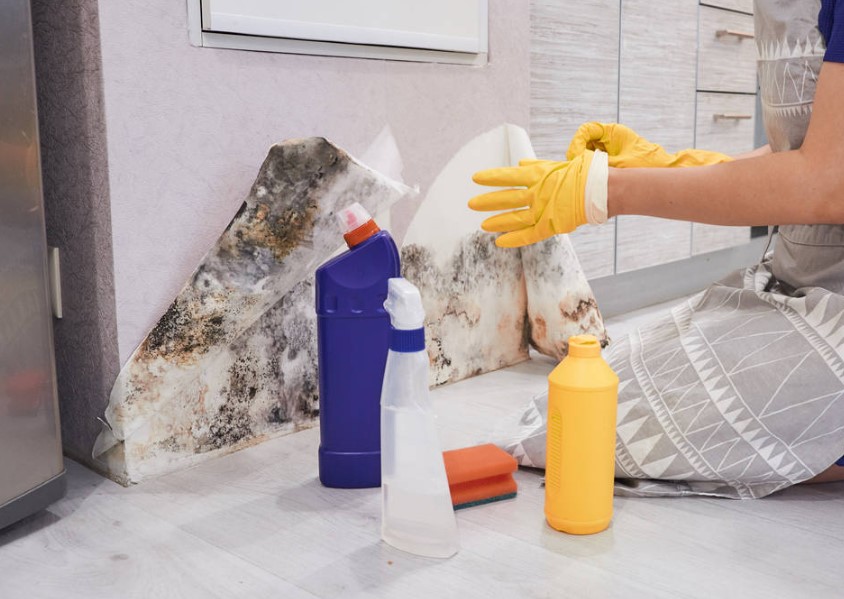
This image is property of frontierresources.com.au.
Table of Contents
Toggle- Understanding Mold
- What is mold?
- Causes of mold growth
- Health risks of mold exposure
- Identifying Mold Infestation
- Preparing for Mold Removal
- Natural Mold Removal Methods
- Chemical Mold Removal Options
- Professional Mold Removal Services
- DIY Mold Removal Steps
- Preventing Future Mold Growth
- Ensuring Safety during Mold Removal
- Post-Removal Cleanup
Understanding Mold
Mold is a type of fungus that can grow and thrive in various environments, both indoors and outdoors. It reproduces by releasing spores into the air, which can then land on surfaces and grow under the right conditions. Mold is commonly found in areas with high humidity levels, such as bathrooms, basements, and kitchens. It can also grow on wet or damp materials, such as carpets, wood, and wallpaper.
What is mold?
Mold is a type of fungi that can be found almost everywhere. It comes in many different colors and can grow on a variety of surfaces. Mold is most commonly seen in homes and buildings as black or green patches, but it can also appear in other colors such as white, brown, or orange. It can cause a musty odor and can pose health risks to those who are exposed to it.
Causes of mold growth
Mold growth is usually caused by excess moisture in an area. This can be due to high humidity levels, water leaks, flooding, or inadequate ventilation. Mold can start growing within 24 to 48 hours of being exposed to moisture, so it’s essential to address any water-related issues promptly. Additionally, poor insulation and condensation buildup can contribute to mold growth by providing the ideal conditions for spores to thrive.
Health risks of mold exposure
Exposure to mold can have negative effects on your health. It can trigger allergies and asthma symptoms, such as sneezing, coughing, and chest tightness. People with respiratory conditions or weakened immune systems may be more susceptible to mold-related health issues. Prolonged exposure to mold can also lead to respiratory infections, skin rashes, and even neurological problems. It is crucial to address mold infestations promptly to protect your health.
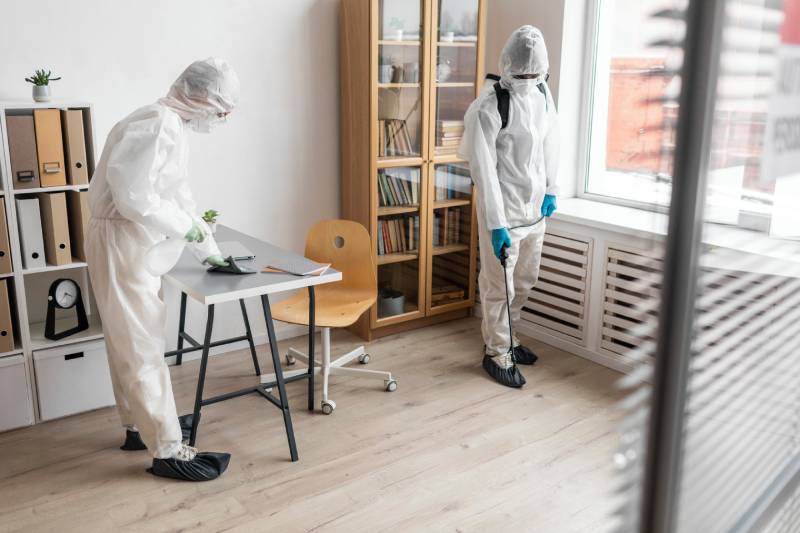
This image is property of toptierrestorationla.com.
Identifying Mold Infestation
Visual signs of mold
Visual signs of mold infestation can include black or green patches on surfaces, such as walls, ceilings, and floors. Mold can have a fuzzy or slimy texture and can also appear as thread-like structures or small black dots. It is essential to pay attention to areas that are prone to moisture, such as bathrooms and basements, as mold growth may not always be visible to the naked eye.
Musty odor
A musty odor is often a sign of mold infestation. If you notice a lingering, earthy smell in your home, it could indicate the presence of hidden mold. This odor is often described as damp or stale and can be more noticeable in enclosed spaces or areas with poor ventilation. If you detect a musty odor, it’s essential to investigate further to identify the source of the mold.
Mold testing
If you suspect mold but cannot find any visible signs or smell any musty odors, mold testing may be necessary. Mold testing involves taking samples from the air or surfaces and analyzing them for the presence of mold spores. This can help identify the type and concentration of mold present in your environment. Mold testing can be done by professional mold inspectors or through DIY mold test kits available in the market.
Preparing for Mold Removal
Gathering protective gear
Before starting the mold removal process, it is crucial to gather the necessary protective gear to ensure your safety. This can include items such as gloves, goggles, masks, and disposable coveralls. These protective measures will help minimize your exposure to mold spores and prevent any potential health risks.
Isolating the affected area
To prevent the spread of mold spores throughout your home during the removal process, it is important to isolate the affected area. This can be done by closing doors and windows and using plastic sheeting to seal off the walls and floors. Creating a containment area minimizes the risk of cross-contamination and helps maintain a cleaner environment.
Creating proper ventilation
Proper ventilation is crucial when dealing with mold removal. Opening windows and using fans can help improve airflow and reduce moisture levels in the area. It is important to ensure that there is enough fresh air circulating in the room to prevent the mold from spreading and to aid in drying out the affected surfaces.
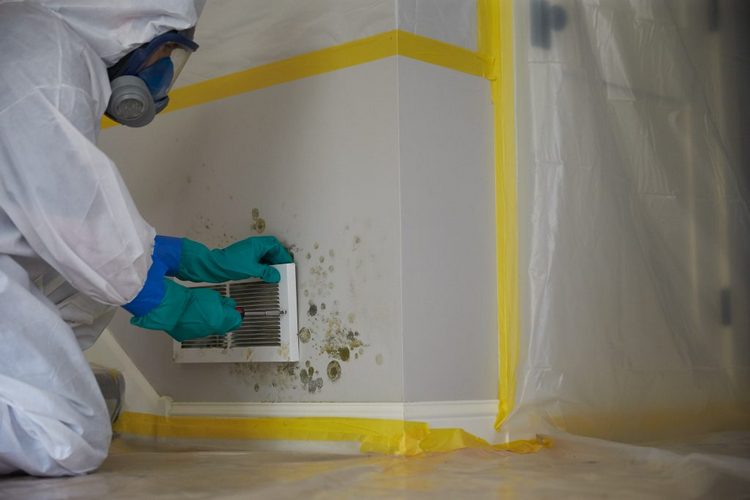
This image is property of f7e5m2b4.rocketcdn.me.
Natural Mold Removal Methods
Vinegar
Vinegar is an effective natural mold removal option due to its acidic properties. It can kill most types of mold and prevent future growth. To use vinegar, simply fill a spray bottle with white distilled vinegar and apply it directly to the moldy surface. Let it sit for several hours before scrubbing the area with a brush or sponge. Repeat the process if necessary, then rinse with water and allow the surface to dry completely.
Hydrogen peroxide
Hydrogen peroxide is another natural mold remover that is effective in killing mold spores and preventing regrowth. To use hydrogen peroxide, pour a 3% concentration solution into a spray bottle and spray it onto the moldy surface. Allow it to sit for 10-15 minutes, then scrub the area with a brush. Wipe away any residue with a damp cloth and let the surface dry completely.
Tea tree oil
Tea tree oil is a natural fungicide that can effectively kill mold and prevent its recurrence. Mix 2 teaspoons of tea tree oil with 2 cups of water and pour the solution into a spray bottle. Spray it directly onto the moldy surface and let it sit for a few hours or overnight. Scrub the area with a brush and wipe away any remaining mold. Airing out the area is essential to ensure complete drying and to remove any lingering odors.
Chemical Mold Removal Options
Bleach
Bleach is a commonly used chemical option for mold removal. It is effective in killing mold spores on non-porous surfaces such as tiles, bathtubs, and countertops. However, bleach may not be as effective on porous materials such as wood or drywall. To use bleach, mix 1 part bleach with 10 parts water and apply the solution to the moldy surface. Let it sit for 15 minutes, then scrub the area and rinse with water. It is important to ensure proper ventilation when using bleach, as it can produce toxic fumes.
Ammonia
Ammonia can also be used as a chemical option for mold removal. It is effective in killing mold on non-porous surfaces and can help remove stubborn mold stains. To use ammonia, mix equal parts ammonia and water and apply the solution to the moldy surface. Let it sit for several hours, then scrub the area and rinse with water. It is important to use caution when handling ammonia, as it can produce harmful fumes. Make sure to use ammonia in a well-ventilated area and avoid mixing it with bleach.
Biocides
Biocides are chemical substances that can kill or inhibit the growth of mold and other microorganisms. They can be effective in treating large-scale mold infestations or areas that are difficult to reach. Biocides should only be used by professionals, as they can be toxic and require careful handling. It is important to follow the manufacturer’s instructions and safety guidelines when using biocides for mold removal.
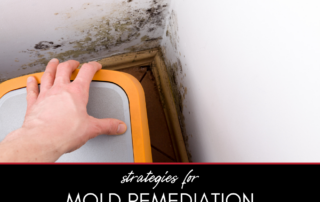
This image is property of exactrecon.com.
Professional Mold Removal Services
When to hire professionals
While some minor mold infestations can be safely removed using DIY methods, there are instances where professional mold removal services are recommended. It is advisable to hire professionals if the mold-affected area is larger than 10 square feet, the mold is within HVAC systems or ductwork, or if there are underlying structural issues. professional mold remediators have the expertise and necessary equipment to handle complex mold problems safely and effectively.
Choosing a reputable mold removal company
When selecting a mold removal company, it is important to choose a reputable and experienced provider. Look for companies that are licensed, insured, and certified in mold remediation. It is also advisable to read reviews, seek recommendations, and request quotes from multiple providers to ensure you are getting reliable and competitive services. A reputable company will thoroughly assess the situation, provide a detailed remediation plan, and follow industry best practices to ensure effective mold removal.
Understanding the removal process
Professional mold removal companies follow a systematic process to remove mold effectively. The process typically involves initial assessment and investigation, containment of the affected area, removal and disposal of mold-infested materials, thorough cleaning and treatment of surfaces, and final clearance testing. Professional mold remediators have access to specialized equipment such as air scrubbers, HEPA filters, and commercial-grade cleaning agents, which allows them to tackle mold infestations more thoroughly and efficiently.
DIY Mold Removal Steps
Preparing the environment
Before starting the mold removal process, it is important to prepare the environment appropriately. This includes opening windows and doors to improve ventilation, turning off HVAC systems to prevent the spread of mold spores, and covering any furniture or belongings in the vicinity of the mold-infested area to protect them from contamination.
Removing visible mold
To remove visible mold, start by wearing protective gear such as gloves, goggles, and a mask. Use a scrub brush or sponge to physically remove the mold from the surface. It is important to scrub gently to avoid dispersing mold spores into the air. Dispose of any contaminated materials and clean the area with detergent and water to remove any remaining mold particles.
Treating affected surfaces
Once the visible mold has been removed, it is important to treat the affected surfaces to prevent future mold growth. This can be done by using natural mold removal methods such as vinegar, hydrogen peroxide, or tea tree oil, or by using chemical options like bleach or ammonia. Follow the instructions provided earlier in the article for each respective method.
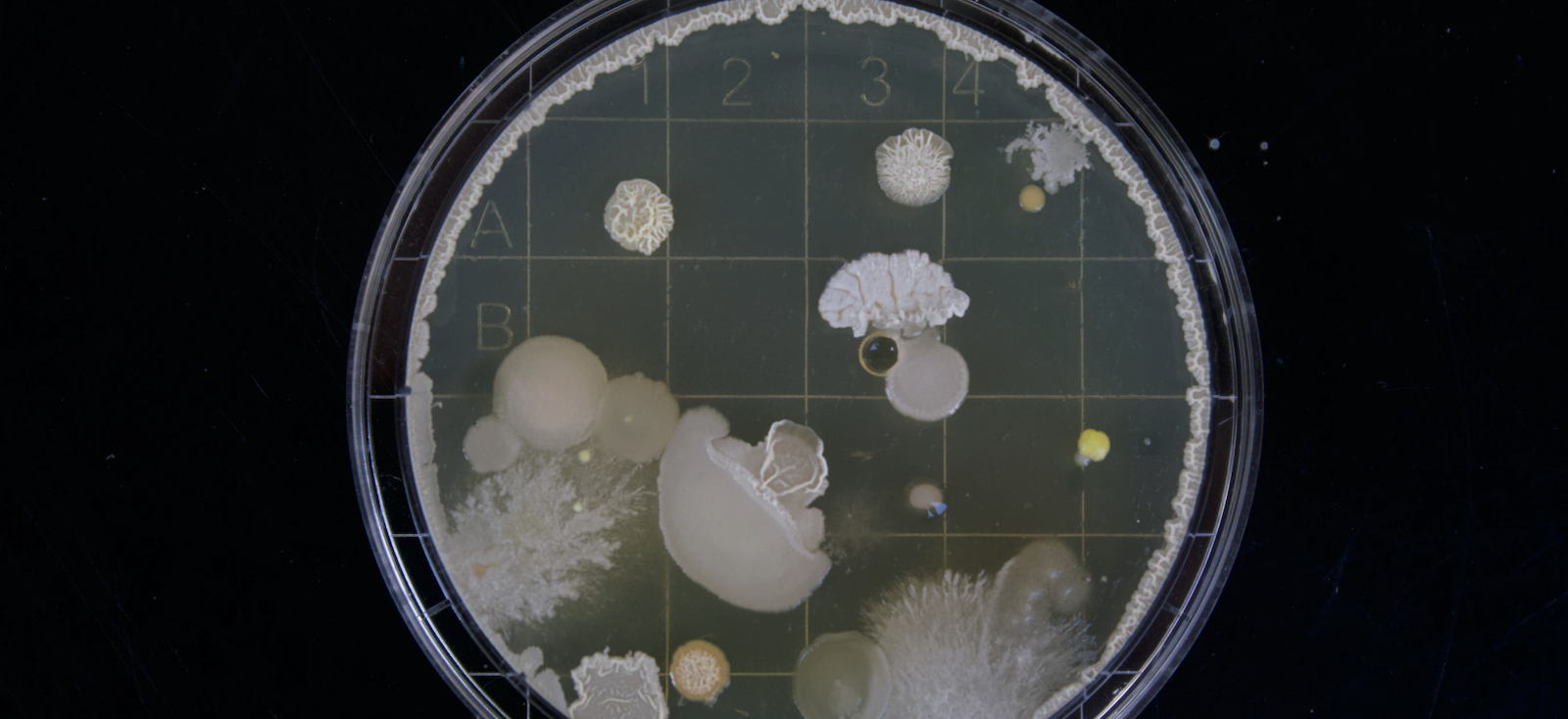
This image is property of www.probuilder.com.
Preventing Future Mold Growth
Controlling indoor humidity levels
Indoor humidity plays a significant role in mold growth. To prevent future mold growth, it is important to keep indoor humidity levels below 60%. You can achieve this by using dehumidifiers, air conditioners, or ventilation fans. Fixing any water leaks promptly, improving insulation, and using exhaust fans in high-moisture areas can also help maintain optimal humidity levels.
Proper ventilation
Proper ventilation is crucial in preventing mold growth. Ensure adequate airflow by opening windows, using exhaust fans, and regularly using kitchen and bathroom vents. Proper ventilation helps remove excess moisture from the air, reducing the humidity levels and creating an environment less favorable for mold growth.
Regular inspections and maintenance
Regular inspections and maintenance are essential to identify and address any moisture-related issues promptly. Regularly check for signs of water leaks, condensation buildup, or any areas of persistent dampness. Properly maintaining and cleaning your HVAC systems, gutters, and downspouts can also help prevent moisture-related issues that can lead to mold growth.
Ensuring Safety during Mold Removal
Wearing protective equipment
When undertaking mold removal tasks, it is crucial to prioritize your safety by wearing appropriate protective equipment. This includes gloves, goggles, masks, and disposable coveralls. These items help protect your skin, eyes, and respiratory system from mold spores and any potential health risks associated with exposure.
Proper waste disposal
To prevent the spread of mold spores and contamination, it is important to dispose of any mold-infested materials properly. Double-bagging the mold-contaminated materials in heavy-duty plastic bags and sealing them tightly will help prevent the release of mold spores. It is advisable to contact your local waste management facility to inquire about the proper disposal methods for mold-infested materials.
Avoiding cross-contamination
During the mold removal process, it is crucial to minimize the risk of cross-contamination. This can be done by isolating the affected area, using plastic sheeting to cover nearby surfaces, and sealing off doors and windows. Additionally, it is important to clean or replace any cleaning equipment and protective gear used during the removal process to prevent spores from being transferred to other areas.
Post-Removal Cleanup
Properly cleaning affected items
After the mold removal process, it is important to properly clean any affected items to remove any remaining mold spores. This can include washing clothing, curtains, bedding, and other fabric items in hot water with detergent. Hard, non-porous items can be cleaned with a solution of detergent and water or using a bleach solution for disinfection, following the manufacturer’s instructions.
Inspecting for hidden mold
Even after visible mold has been removed, it is essential to inspect for hidden mold. This can be done by checking areas that were previously affected, as well as areas that are prone to moisture or have a history of water damage. It is advisable to use moisture meters or thermal imaging devices to identify hidden pockets of moisture, which can indicate the presence of hidden mold.
Monitoring for recurring growth
Once the mold removal process is complete, it is crucial to monitor the area for any signs of recurring mold growth. Regularly check for any visible mold, musty odors, or moisture-related issues. If mold reappears, it may indicate underlying moisture problems or inadequate remediation. In such cases, it is advisable to seek professional help to address the issue effectively.
By understanding mold, identifying infestations, preparing for removal, and implementing effective removal methods, you can tackle mold problems in your home or building. Whether you choose natural or chemical methods, DIY or professional services, it’s important to prioritize safety and take preventative measures to minimize the risk of future mold growth. Regular inspections, appropriate maintenance, and controlling indoor humidity levels are key to creating a mold-free environment. Remember, timely detection and proper removal are crucial to protecting your health and preserving the integrity of your living spaces.



